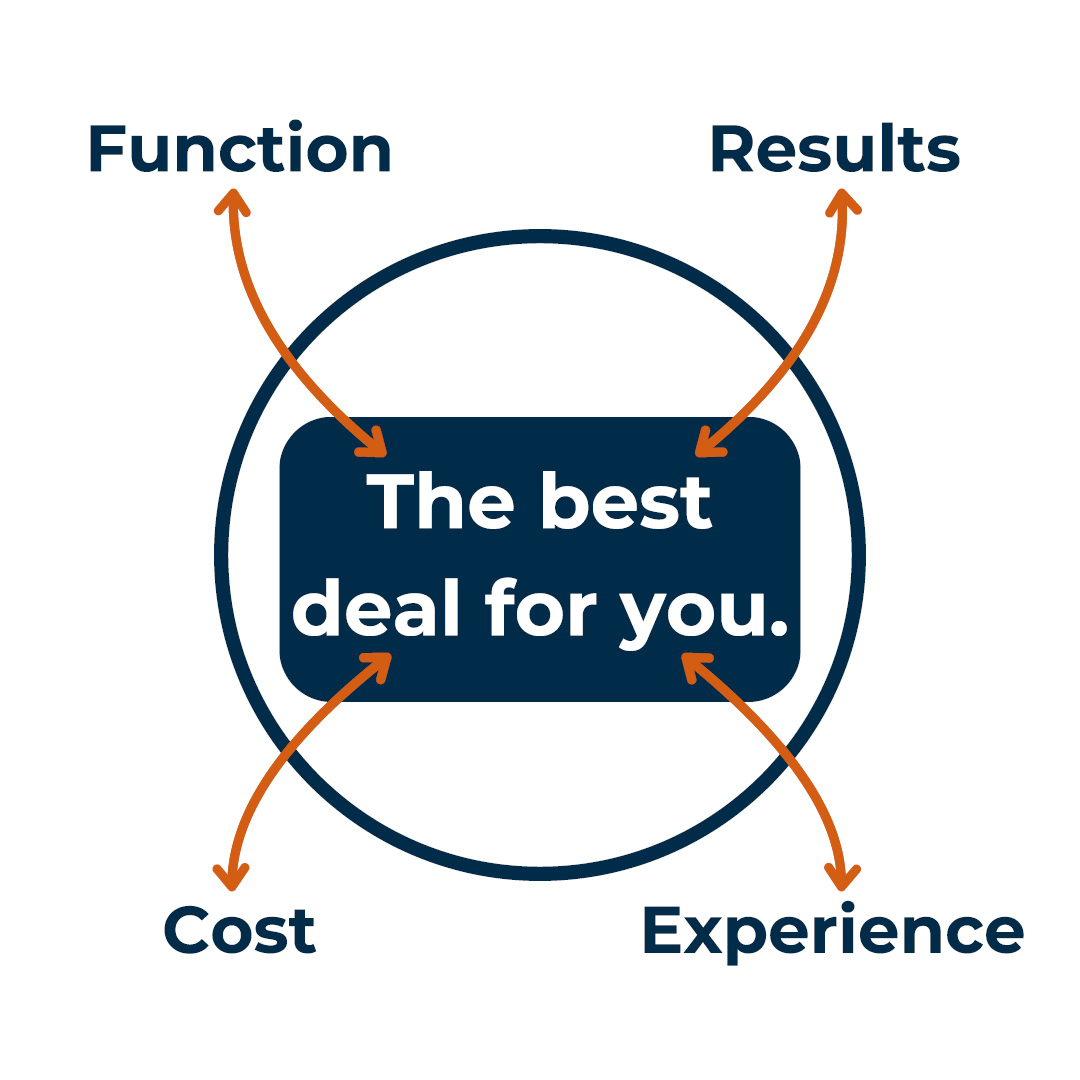By Derek Brainard, Director of Financial Education at AccessLex Institute®. Derek is a CERTIFIED FINANCIAL PLANNER® professional, an Accredited Financial Counselor®, and a Chartered Retirement Planning Counselor®.
Have you ever had the feeling that those “deep discounts” you see scrolling through your social media feed are really just a way to entice you to click and buy something you weren’t intending to buy in the first place?
The AccessLex Center for Education and Financial Capability® coaching staff gets these types of questions all the time. How do we know we’re getting the best deal on a car? Is the real estate market going to go back to affordable levels? These decisions are uniquely magnified when comparing law school financial aid award letters and eventually bar prep courses, funding living expenses while studying for the bar, and job offers – all significant financial choices that drive a lot of value comparison questions to the team of Accredited Financial Counselors.
These choices also come to us every single day at the grocery store, coffee shops, online shopping, and home/apartment furnishing and maintenance. Uber or Lyft? Brand-name or store-brand? Organic or non-organic? These choices are all exercises in getting to the intrinsic value of one option to compare it to others. And here value can, and often does, include more than cost.
So, how can you decide for yourself the real value of a purchase? Here’s my take: the value of a purchase of any kind can typically be observed in its intersection of function, results, user experience, and cost.

Function
How well does the product do what it says it does? Fortunately (or unfortunately), there can be many choices that provide similar functionality depending on what you’re shopping for. Just try shopping for clothes on Amazon and you’ll quickly see what I mean. A quick search for “jeans” yields literally hundreds of results.
It’s been shown that too many options to choose from can cause analysis paralysis. So how are we supposed to choose? This is where getting specific on the functionality you’re looking for becomes important. What type of fit, color, size, and style are you looking for?
The more you can understand how your options can serve the specific function you’re seeking, the more you can filter out the less suitable options.
User Experience
User experience is crucial because it impacts satisfaction and the overall value of a product or service. A seamless experience enhances functionality, making the product more intuitive and pleasant to use. For instance, a user-friendly washer can save time and reduce stress, even compared to a pricier model with more features.
Service quality also affects user experience. If you’ve ever been frustrated with a long hold time for customer service, you know what I mean. You can test the service of a potential purchase beforehand by doing some “mystery shopping” and asking general questions to gauge responsiveness.
Higher-tech options or brand names that have been around a long time can cost more, but we ultimately want to know how that translates to user experience and whether it’s any better (if not worse) than newer or lower-cost alternatives. Or both.
Results
A product must deliver on its promises, or you’ll look elsewhere. We often read reviews before buying and are even willing to sometimes pay more for highly-rated products.
In the world of legal education, researching outcomes can include looking at law school data on job placement as a helpful step in law school choice. If you want to practice a specific type of law and there are a few schools that are known for placing graduates in those areas, you’ll naturally be including them in your school comparison process.
Another good example of researching results before buying is shopping for LSAT, GRE, or bar prep courses. When contemplating such a course, the end goal – passing the exam – becomes a primary driver of value. View and compare recent pass rates and ranges for all your options, because the ultimate result of this choice is admission and/or a new career.
Cost
Cost can be tricky. Sometimes, you get what you pay for, but prices can also be artificially inflated to create a perception of deals. Researching the intrinsic value of a product helps combat this “price manipulation” as a marketing tactic.
Think about buying a car. Can you negotiate, or is it a “no-haggle” dealer? Some dealers list bottom-line prices, creating trust and quicker transactions. Be wary of companies that constantly offer “sales” because if there’s always a sale, there was never really one to begin with.
Companies know how to exploit our biases, making it hard to say no to perceived deals. To avoid manipulation, discern the real value beyond premium pricing models and artificial discounting.
Where Function, User Experience, Results, and Cost Intersect
The best deal meets your needs and preferences, balancing function, user experience, results, and cost.
This framework for analyzing the value of your purchase can help you avoid buyer’s remorse or guilt about spending, since you’ll be going into the purchase with an understanding that it serves not only your bank account but also what you prioritize in life.
Ultimately, the best buys align with your specific needs at a specific point-in-time, not just deep discounts.
To discuss your investing questions, schedule a free call with an Accredited Financial Counselor® through AccessConnex by AccessLex℠.

